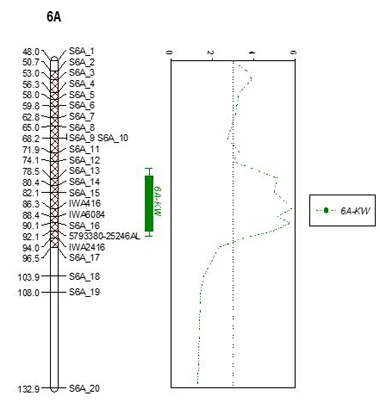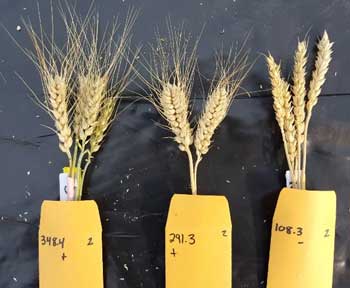 |  |  |
| Co-PI: J. Paul Murphy njpm@ncsu.edu | Co-PI: Gina Brown-Guedira gina.brown-guedira@ars.usda.gov | Graduate student: Eddie Lauer elauer@ncsu.edu |
We will work to validate, dissect and characterize a QTL for kernel weight (KW) located on chromosome 6A. The QTL was identified in a RIL population derived the cross SS-MPV 57 x Massey when grown at Raleigh, NC for three years. The QTL has an additive effect of 1.75 mg. In this population, the KW QTL coincides with plant height QTL having an additive effect of 3.78 cm. Heterozygous plants were identified in F5-derived RIL for development of fine-mapping populations. This QTL region is physically large and spans the centromere. Observed recombination in the HIFs has been localized towards the ends of the QTL interval.
A second population of 358 RIL from the cross SS-MPV57 x LA95135 is being used to validate the KW QTL effect. This population is also being targeted for identification of additional QTL in regions more amenable to fine-mapping and cloning.

Figure 1: QTL Interval for chromosome 6A kernel weight QTL.
Progress towards QTL Validation
Greenhouse study of SS-MPV57 x LA95135 population:
- 358 RILs were grown in four randomized complete blocks
- Measured PH, KW, spikelet number (SN), spike length (SL), flowering time
- Used GBS data to construct high-density map and run QTL analysis

Figure 2: Photograph depicting the striking range of variation in spike morphology present in the SS-MPV57 x LA95135 population
